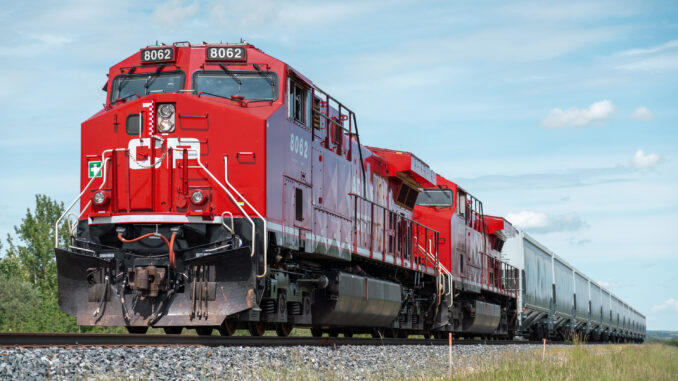
After all that, Canadian Pacific Railway and Kansas City Southern have entered into a merger agreement.
Under the deal, CP agreed to acquire KCS in a stock and cash transaction representing an enterprise value of approximately USD $31 billion. The deal includes the assumption of $3.8 billion of outstanding KCS debt.
The deal comes after months of back and forth between Canadian Pacific and Canadian National and a day after Kansas City Southern Canadian National announced they would end their merger deal.
“Our path to this historic agreement only reinforces our conviction in this once-in-a-lifetime partnership,” CP President and Chief Executive Officer Keith Creel said in a news release.
“We are excited to get to work bringing these two railroads together,” Creel added. “By combining, we will unlock the full potential of our networks and our people while providing industry-best service for our customers. This perfect end-to-end combination creates the first U.S.-Mexico-Canada rail network with new single-line offerings that will deliver dramatically expanded market reach for CP and KCS customers, provide new competitive transportation options, and support North American economic growth.”
The transaction, which has the unanimous support of both boards of directors, values KCS at $300 per share, representing a 34 percentpremium, based on the CP closing price on Aug. 9, the date before CP submitted a revised offer to acquire KCS, and KCS’ unaffected closing price on March 19.
“We are glad to be partnering with CP to create a railroad that is able to compete by providing the best value for the transportation dollar,” KCS President and Chief Executive Officer Patrick J. Ottensmeyer said in a news release. “The CP-KCS combination will not only benefit customers, labor partners, and shareholders through new, single-line transportation services, attractive synergies and complementary routes, it will also benefit KCS and our employees by enabling us to become part of a growing and truly North American continental enterprise.”
While remaining the smallest of six U.S. Class 1 railroads by revenue, the combined company would have a much larger and more competitive network, operating approximately 20,000 miles of rail, employing close to 20,000 people, and generating total revenues of approximately $8.7 billion based on 2020 actual revenues.

